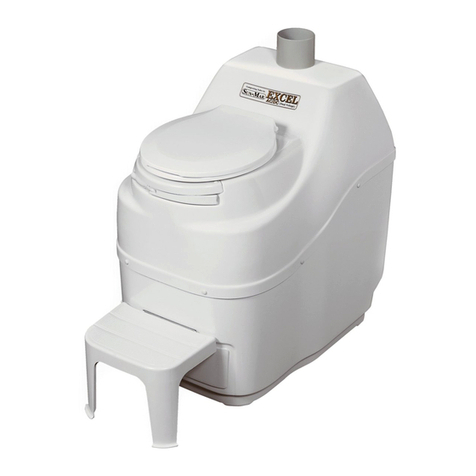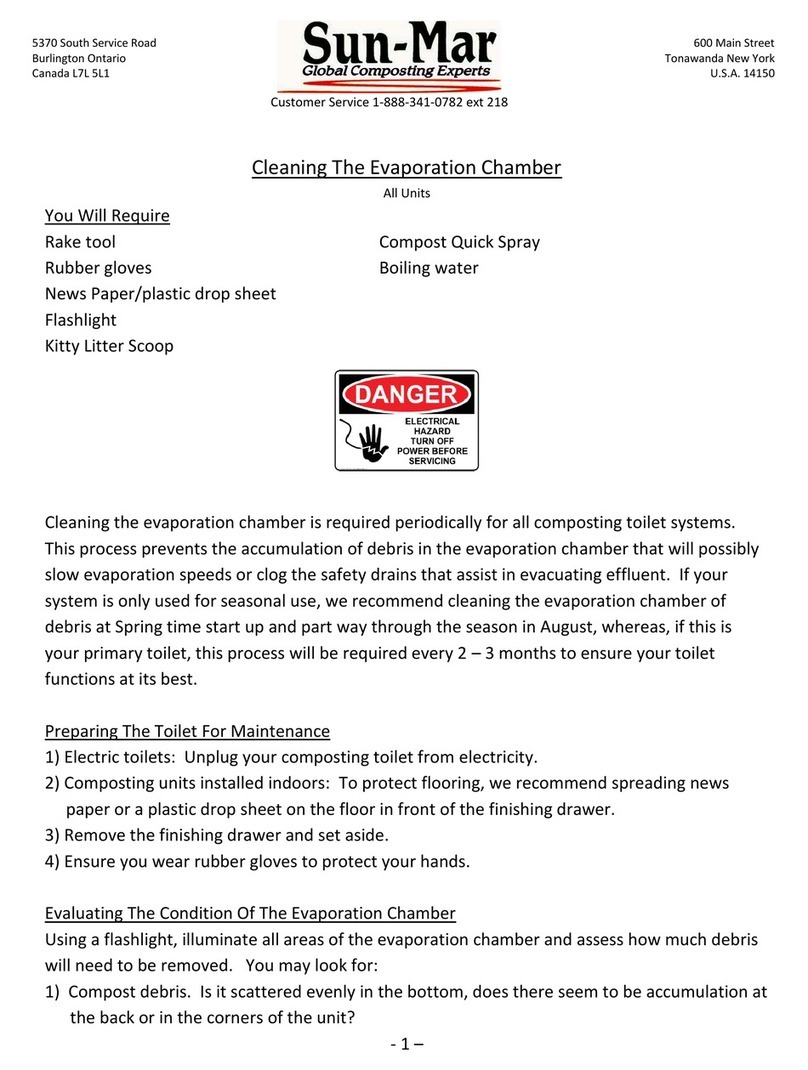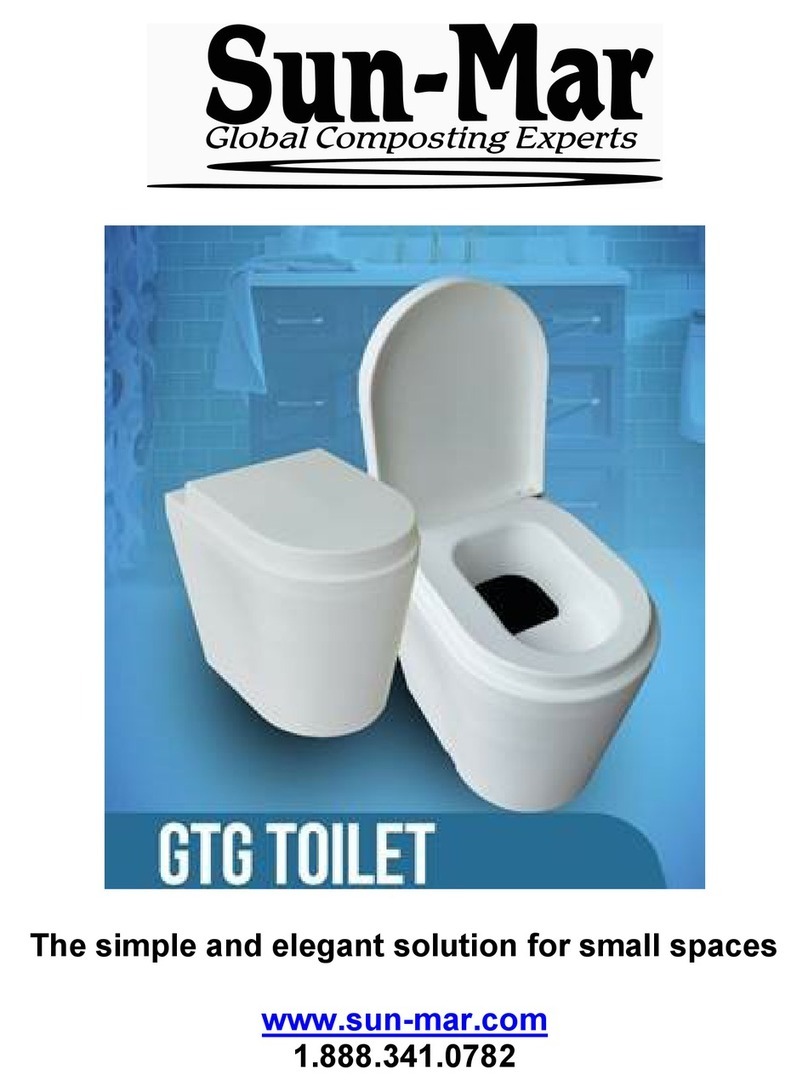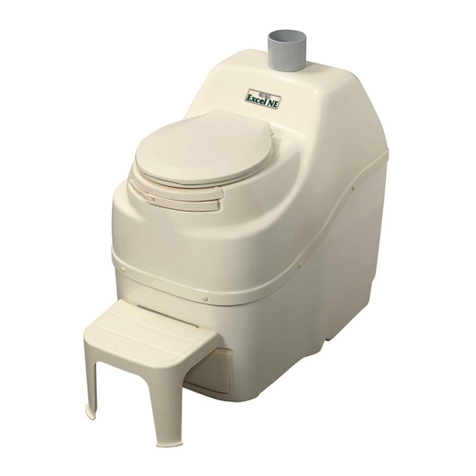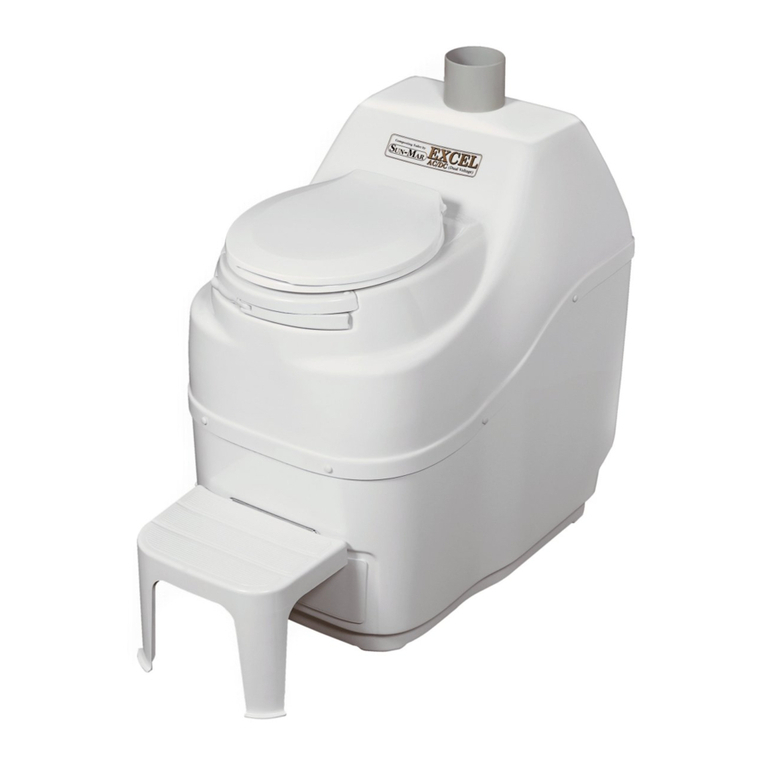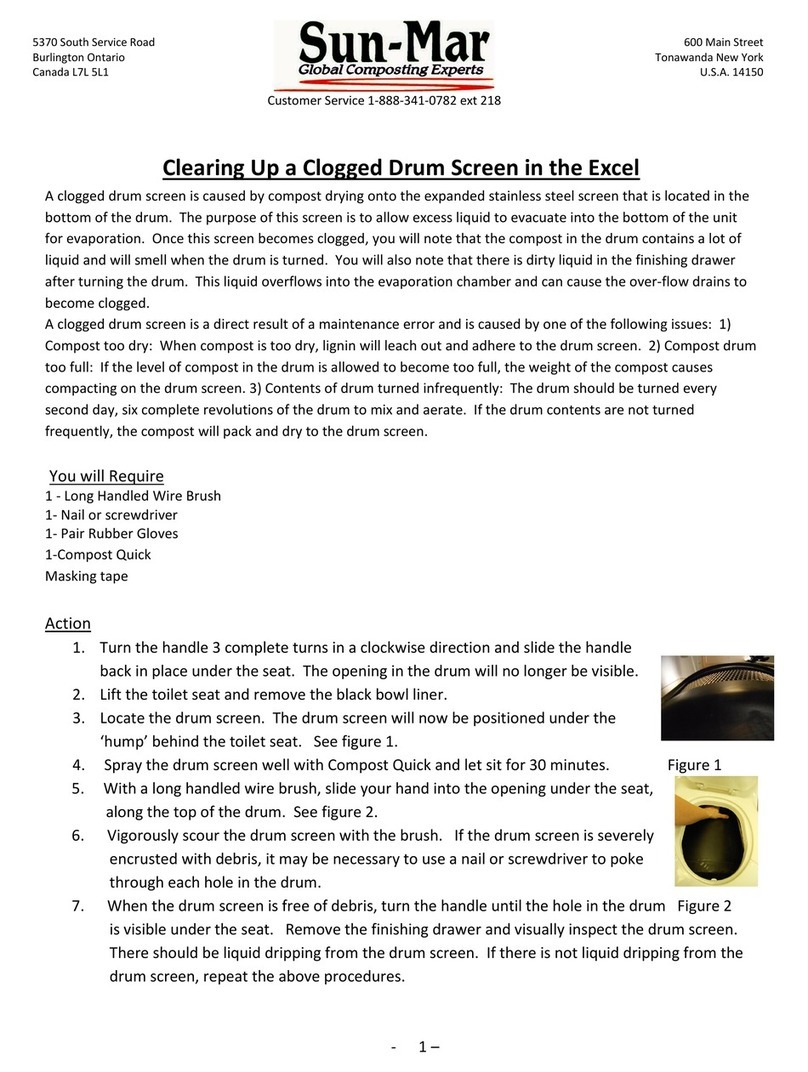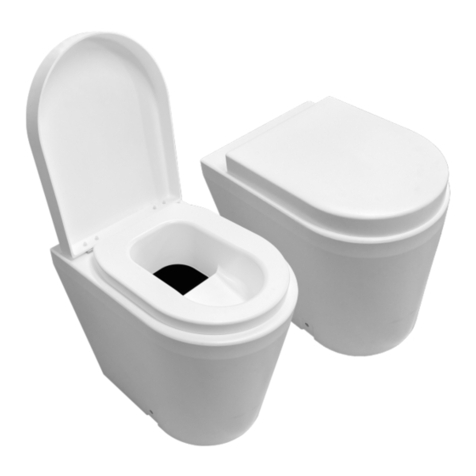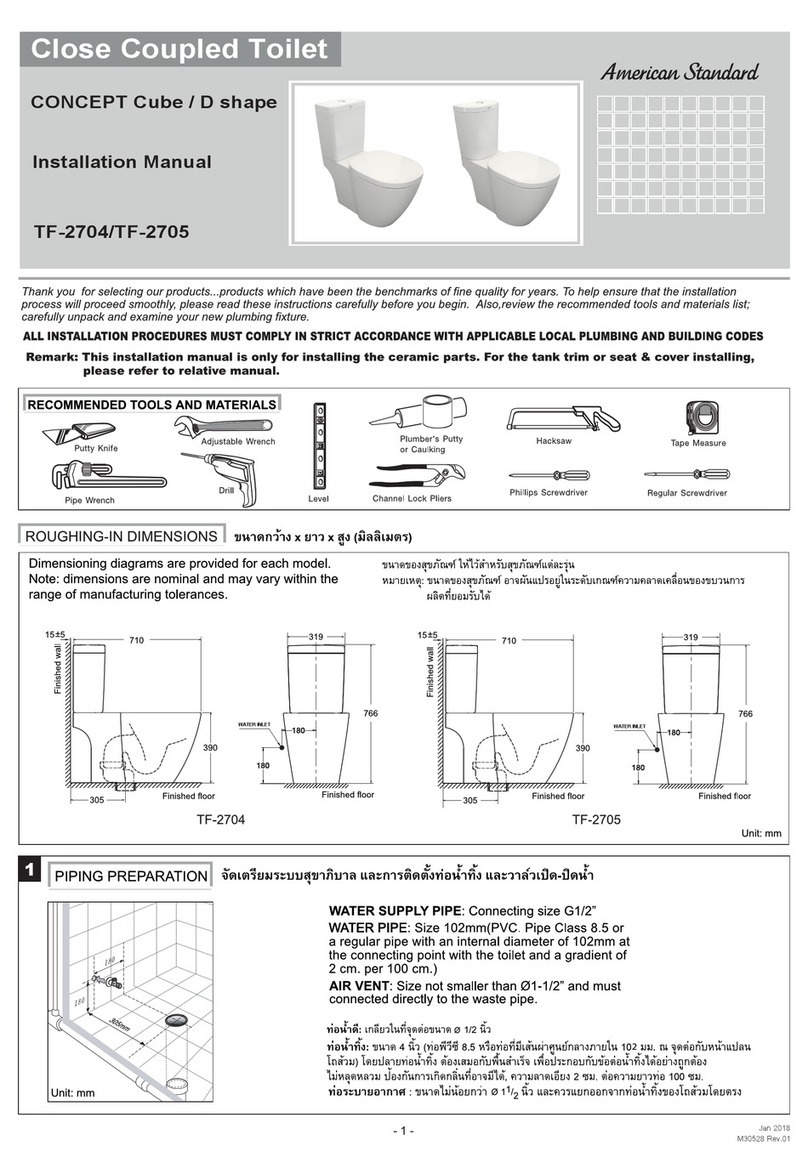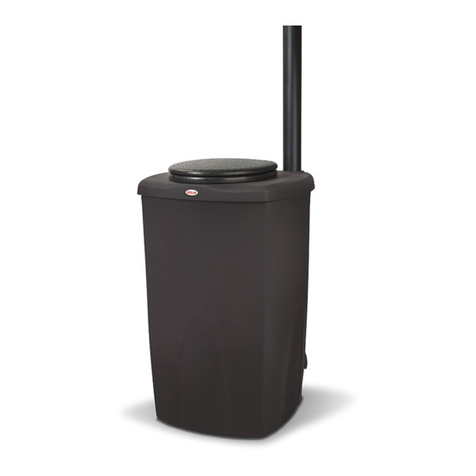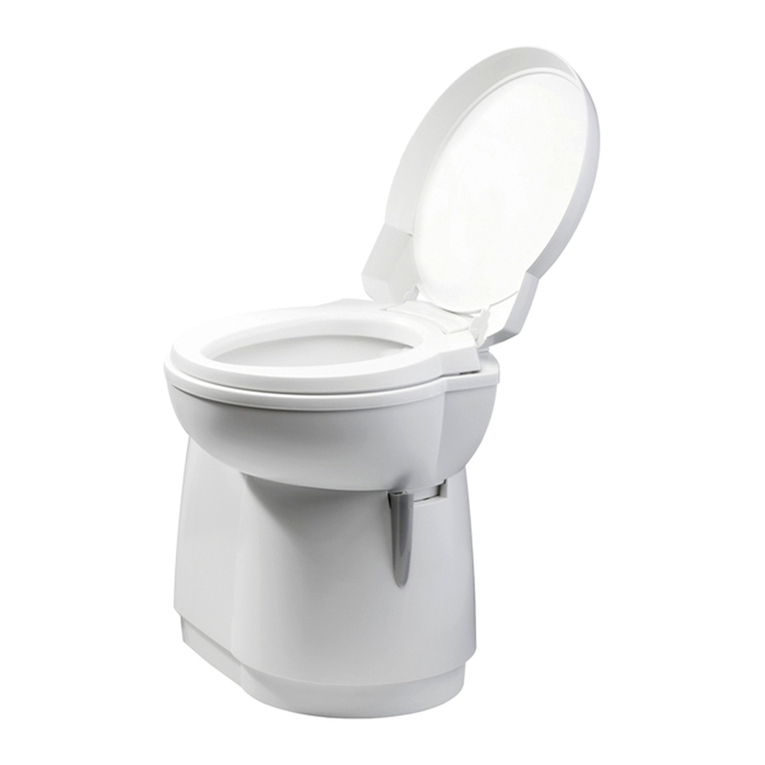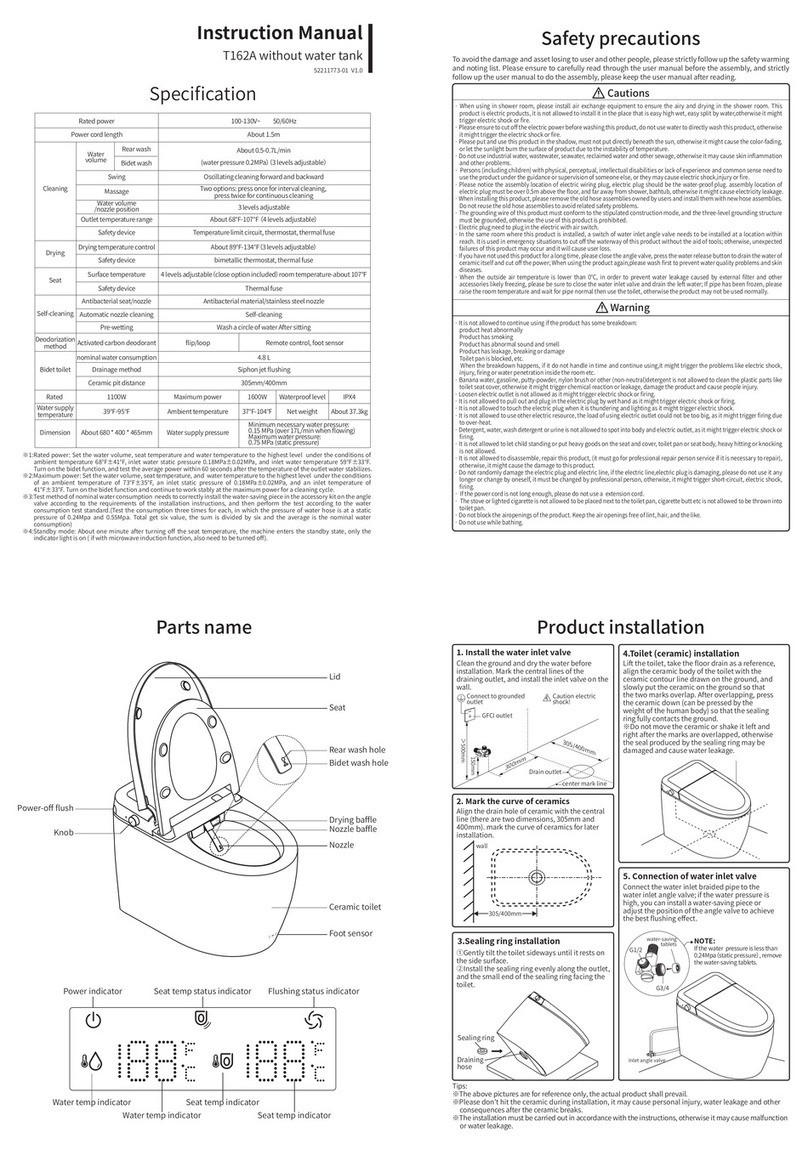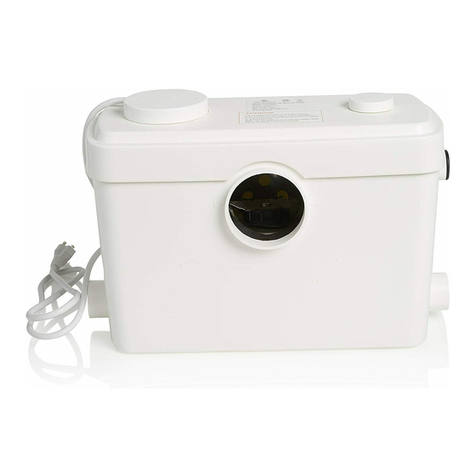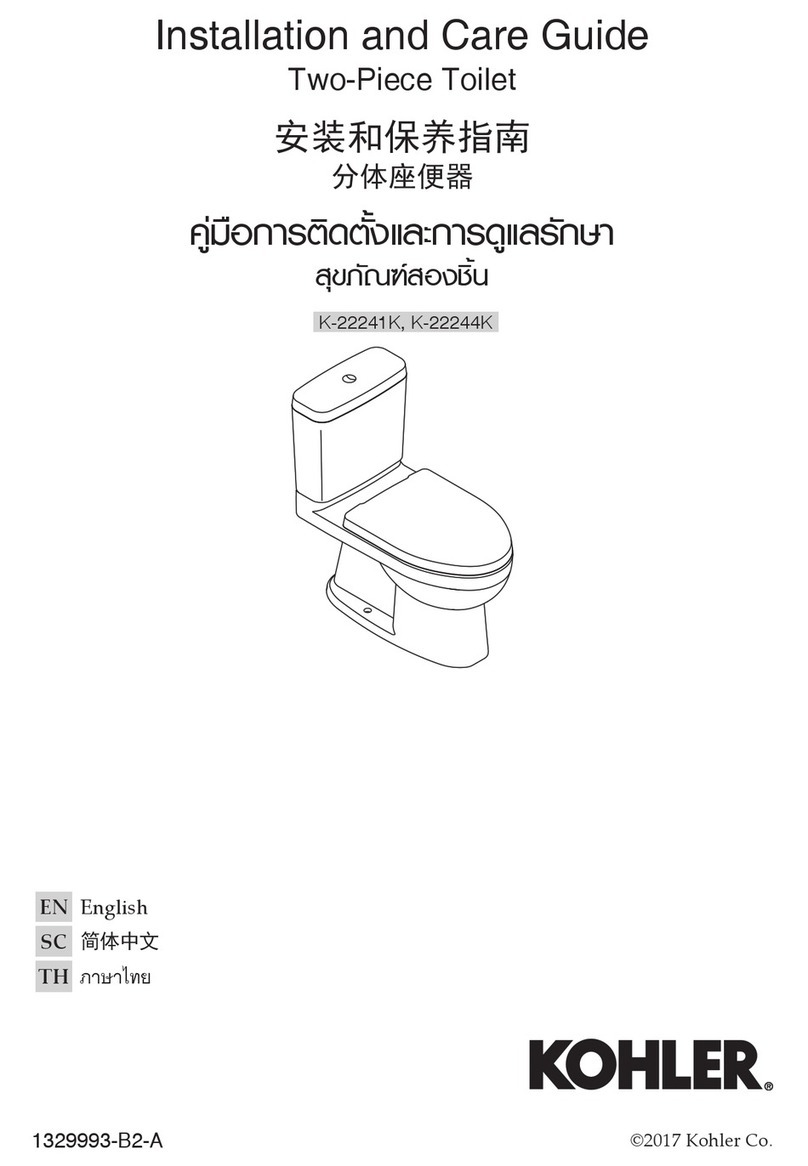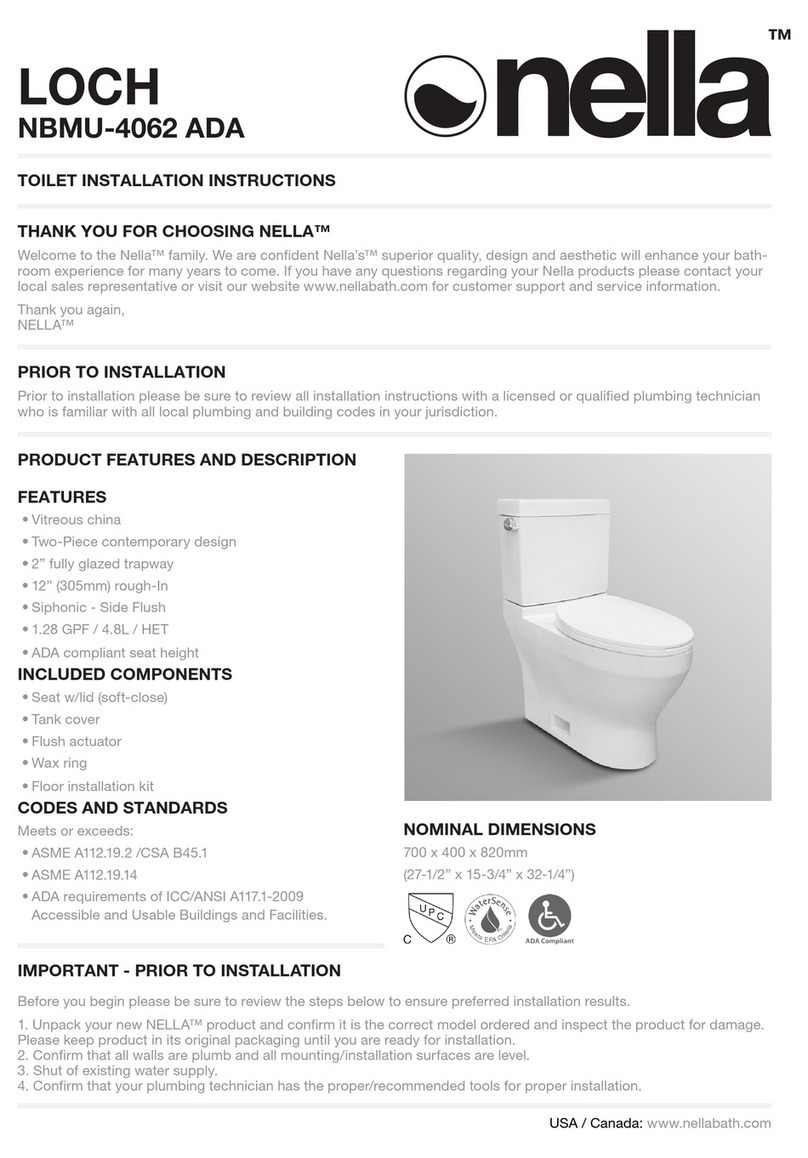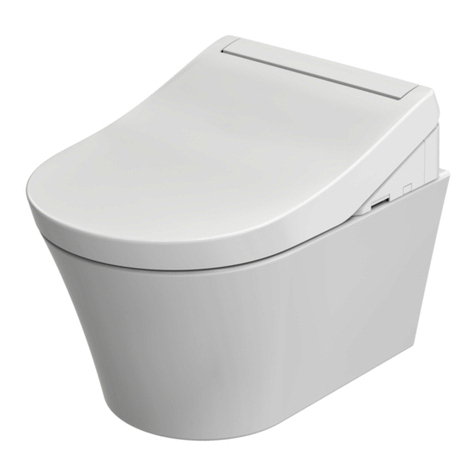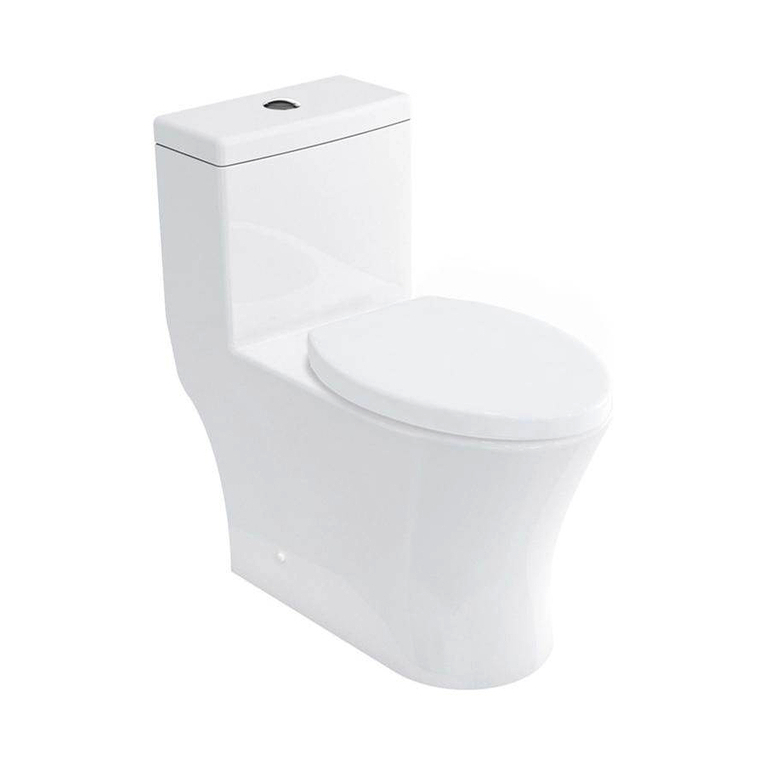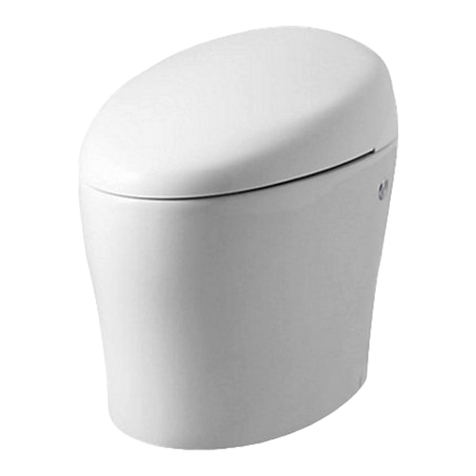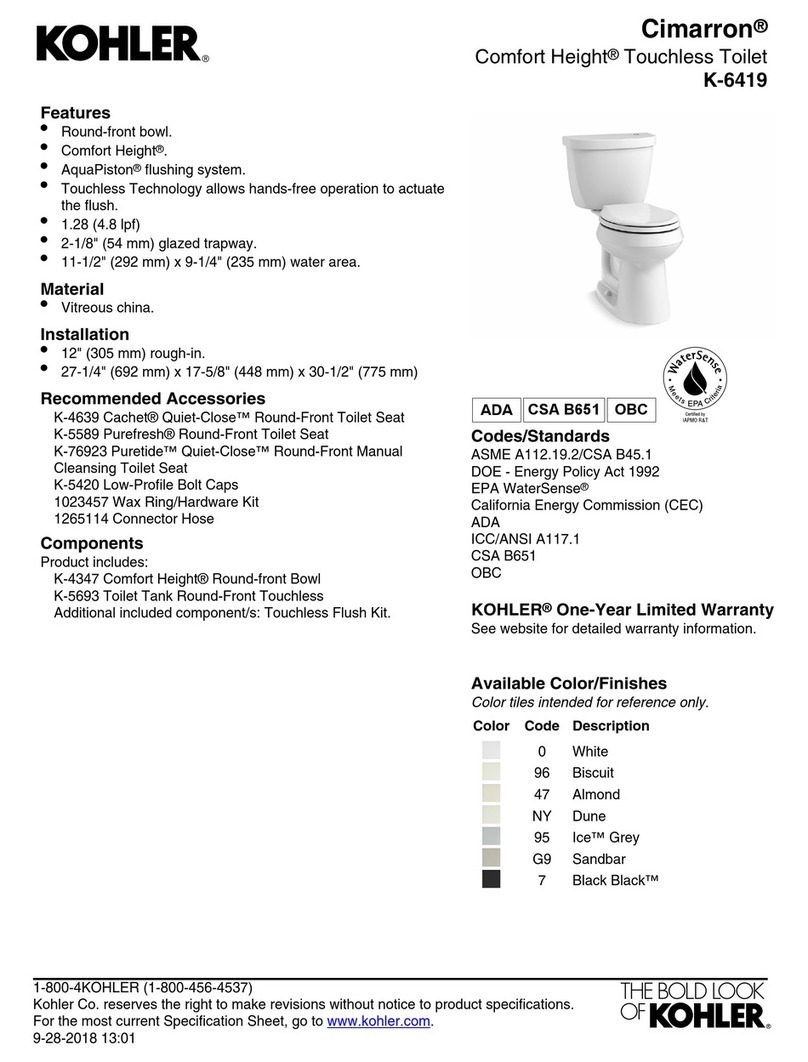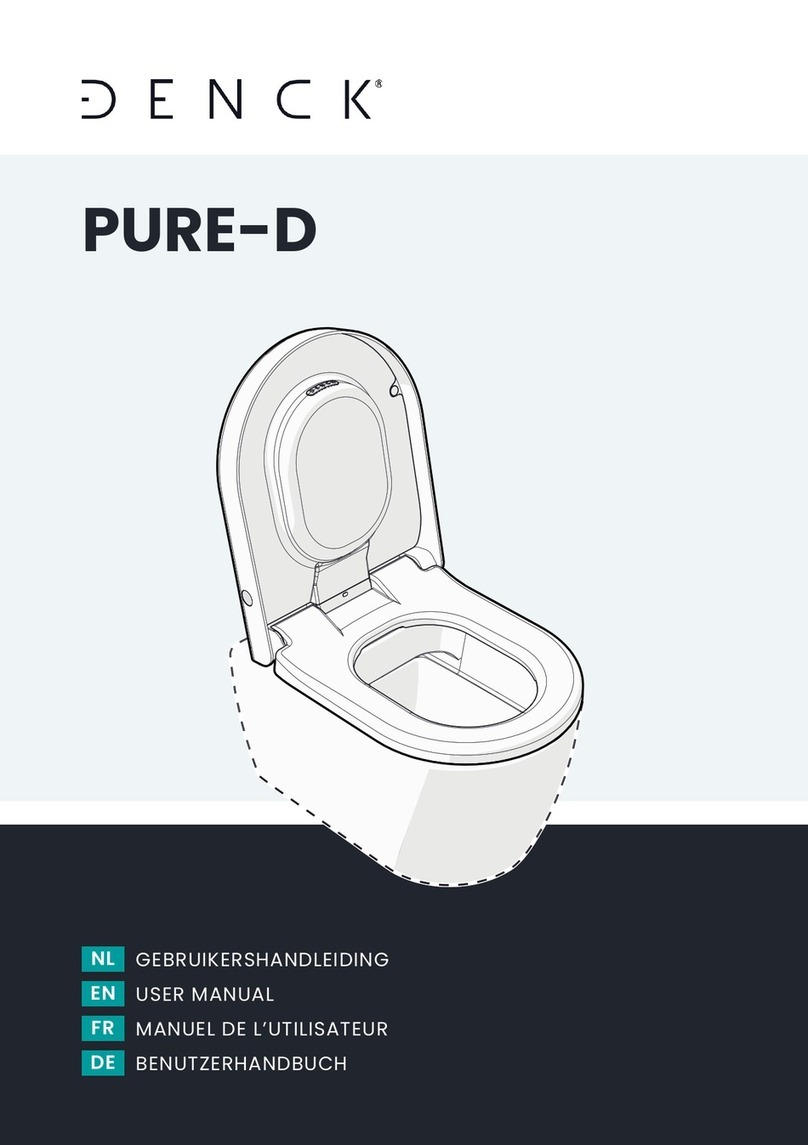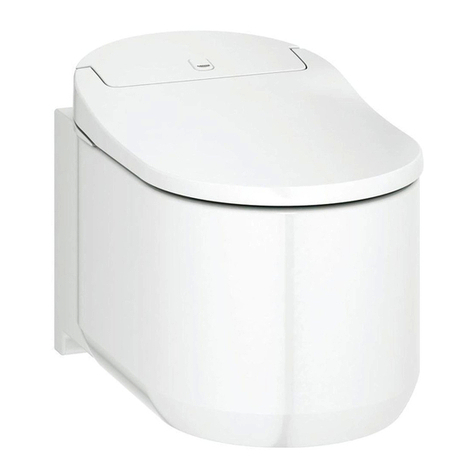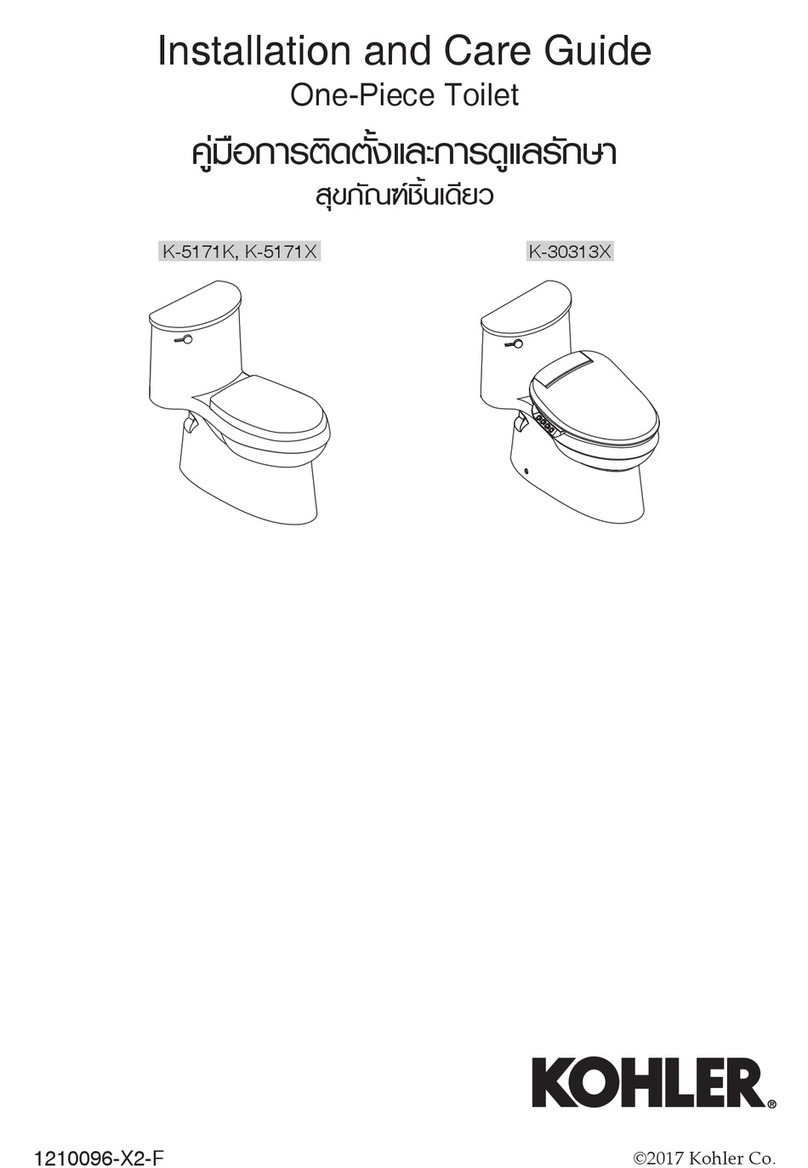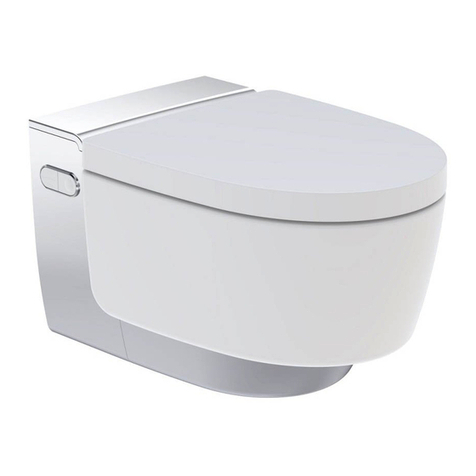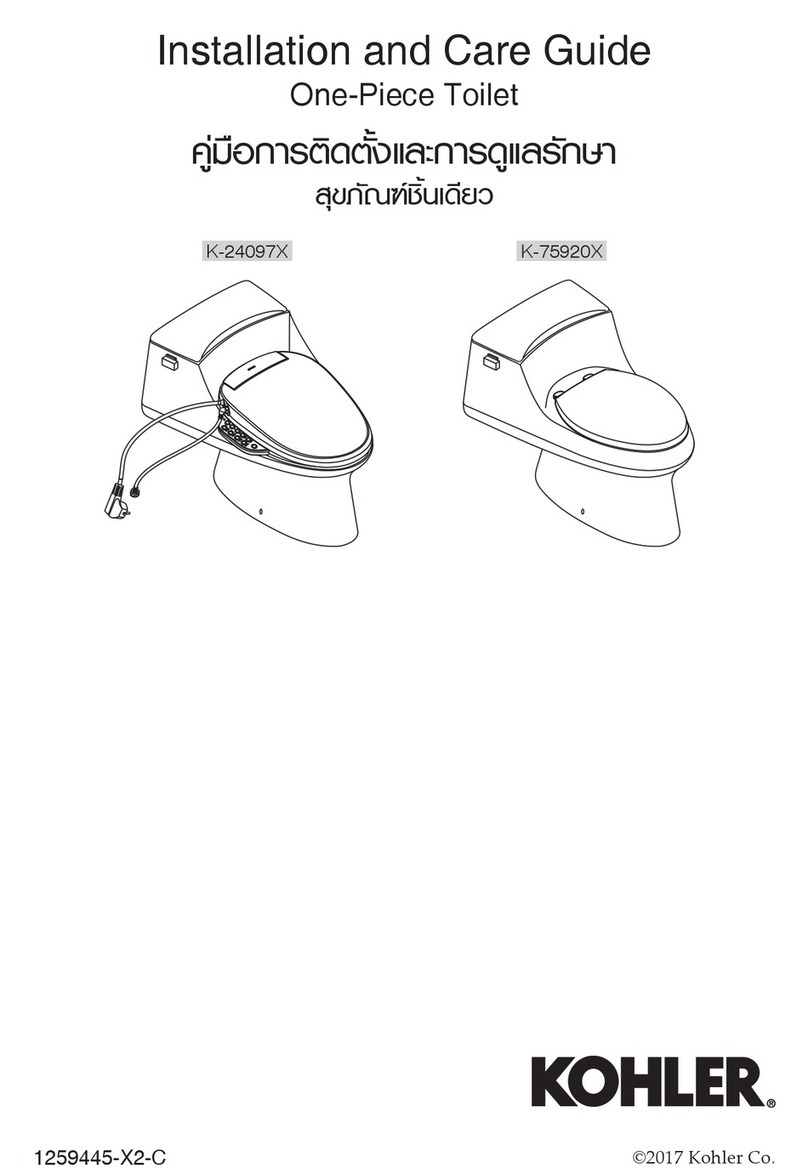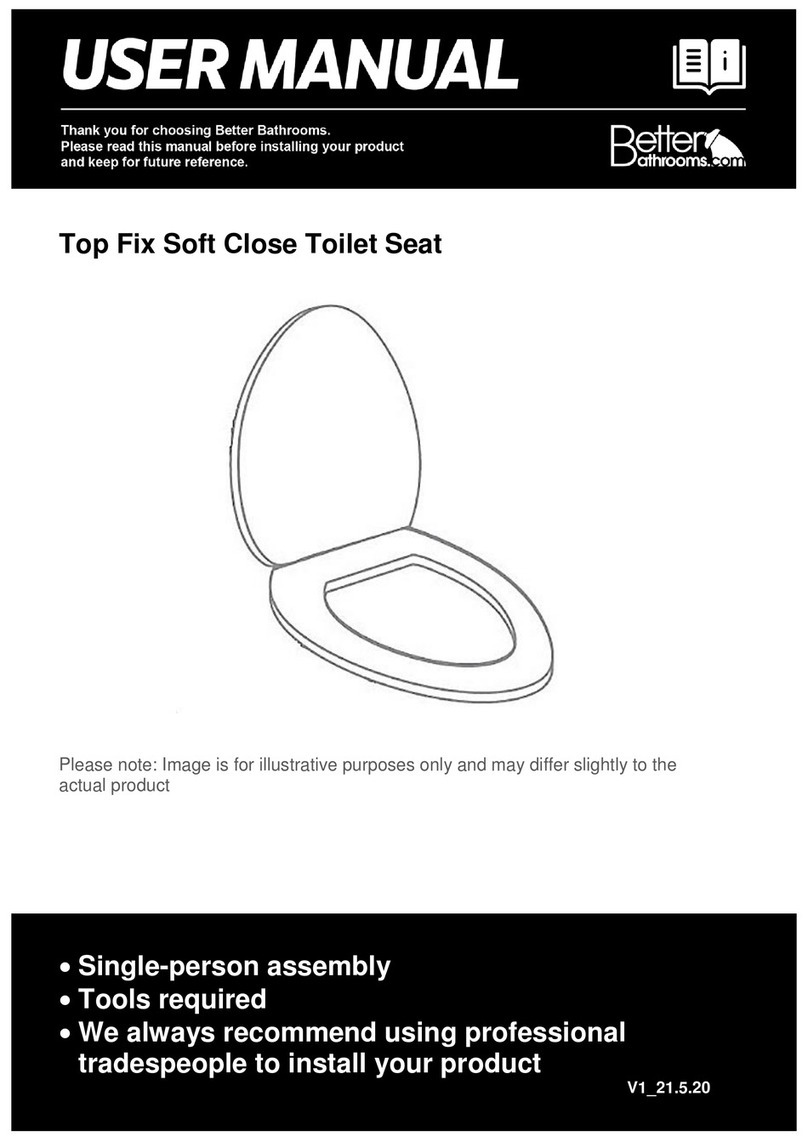
Installation FAQ
1) Must I install the vent?
Yes, in order to ensure odorless operation.
2) Vent pipe leading out of the toilet
When you are installing the vent pipe, completely
avoid ANY downward sloping or horizontal runs,
no matter how small.
3) How many bends can I put in the vent pipe?
Electric Systems
:
No more than four 45°bends.
There should not be any horizontal runs (no matter
how small) or downward slopes of the pipe. Fasten
your pipe with the supplied brackets to prevent
settling.
Non-Electric
:
No more than two 45°bends.
4) Can I merge the toilet vent with an existing
plumbing vent
No. We realize that this will make your installation
easier, but if the toilet is not installed with its own vent,
it will hamper the airflow, and will lead to odors. In
addition, other plumbing fixtures connected to the
same vent will start to smell of ammonia. The toilet
needs to be installed with its own vent in order to
function odorlessly.
5) Where does the diffuser go?
On top of the vent stack
.
6) I have a metal roof, an obstruction or a steeply
pitched roof. Must I have the vent above the peak
of the roof?
Yes. If the vent ends under the eave, the air from the
vent will downdraft over the property, possibly causing
a urine smell to occur. The vent should be installed 24-
30 inches above the peak of the roof to prevent
downdraft.
7) How will I secure the stack if I need go to 24-30
inches above the peak of the roof?
Guy wires. These should be available at your local
hardware store; you may have already used them
for other applications.
8) Can I use venting other than what is
supplied?
No, always use the recommended venting.
Schedule 40 venting has a smaller inside diameter
that will reduce venting capacity, and may result in
odor. Flexible venting should not be used in any
application of a CENTREX 3000 toilet, as this will
result in odor around the toilet.
9) Do I need to plug in my electric toilet?
Yes. Your composting toilet should be plugged in
continuously unless it will not be used for 3 or more
consecutive days.
10) Will I need an overflow drain on my Centrex
3000 or my Centrex 3000 NE?
While both toilets have a considerable evaporating
capacity, an overflow drain will be required in all
installations.
11) Do I really need an overflow drain with a
non-electric toilet?
Yes. You will have overflow liquid, even with limited
usage.
12) What should the overflow drain be
connected to?
All effluent handling systems should be in
accordance with local regulatory practices.
13) The area where the composter is
installed can get below 55°F (13°C) at
times. Will this affect composting?
Yes. If the toilet is being used continuously, you will
need to install an additional heat source, and build
an insulated box around the composter (if installed
outside), see page 14 for further details.
4
